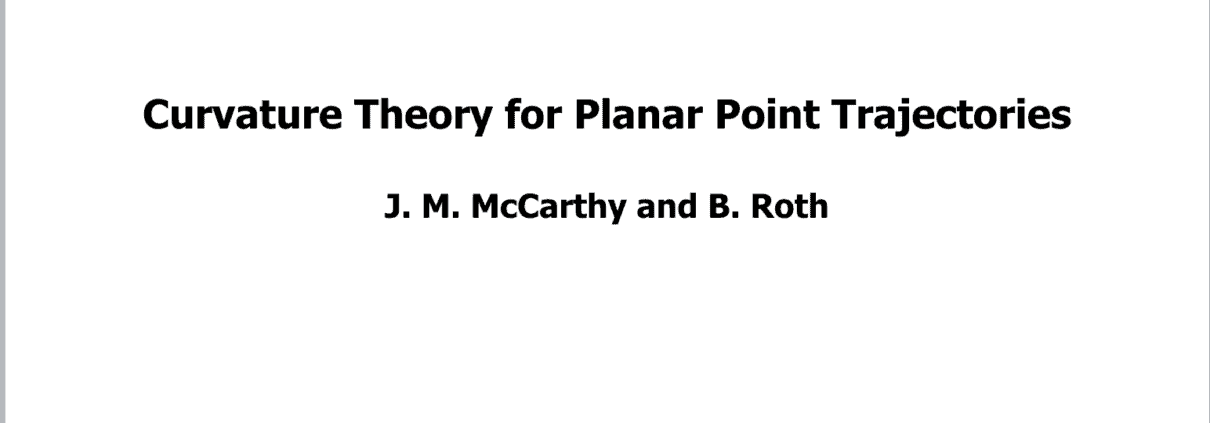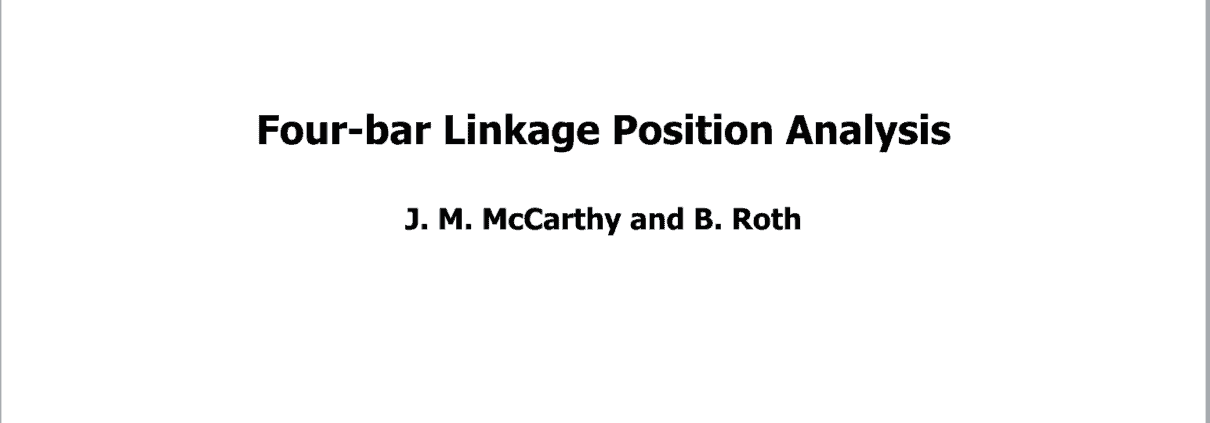Introduction to Linkage Synthesis
This introduction to the graduate course ME 322 Kinematic Synthesis of Mechanisms shows the potential for design innovation using a mathematical formulation to compute the dimensions of a device from its required task, literally the calculation of its form from the desired function.
More notes on Kinematic Synthesis Also see my book Kinematic Synthesis of Mechanisms: a project based approach





